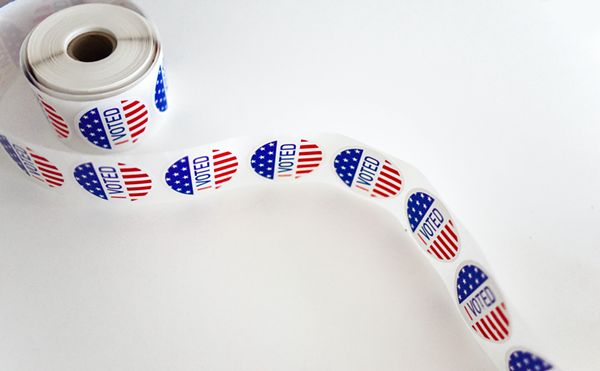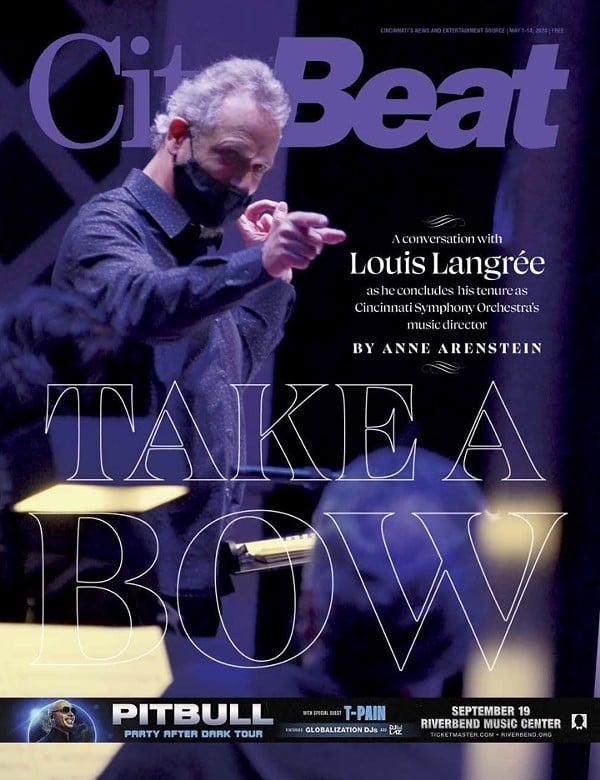Intruding on strangers’ privacy bothered more undergraduate reporting students than anything else I required of them. Some opted for other trades. The “need to know” of readers, listeners and viewers didn’t salve their bruised ethics.
I respect that. Intruding is something reporters do. Intrusions can be personal, professional, financial or commercial. Or more than one of the above. And, yes, despite inexplicably loud cell phone conversations, awareness of omnipresent smartphone cameras and overly revealing Facebook posts, many Americans still assert their right to privacy. Meanwhile, many also seek intimate information about celebrities and others.
That hypocrisy might explain why so many Americans get nasty when a reporter or photographer invades their privacy face-to-face, by email or telephone. So reporters wheedle, nudge, dig and push. Intrusions can do justifiable harm: revealing, say, a judge’s hidden conflicts of interest or an athlete’s drug use.
Sometimes, it’s unjustifiable harm. Cleveland’s WEWS-TV admits it “made a poor judgment call in posting a story about Charles Ramsey’s criminal record and how he’s since reformed.” Ramsey initially was the hero of the rescue of three imprisoned young women from a Cleveland home.
Privacy already was in the news after LaSalle High School senior Joseph Poynter shot himself during class. The Enquirer — and CityBeat when writing about the Enquirer decision — named him. Some readers were offended, especially after Poynter’s family pleaded for privacy. Other readers wondered what kind of privacy fantasy persists after a public suicide attempt. CityBeat later deleted Joseph’s name, telling readers the family asked for privacy. Here’s Enquirer editor Carolyn Washburn’s explanation:
“It was a difficult decision to name the student. His name — and others that were incorrect — have been circulating on social media. Today we received confirmation and clarity in a police report. This was an unusual situation, an extremely public situation. A young man brought a gun into a school. He discharged it in a crowded classroom. There was chaos for an entire community. And one factor — though not the only one — is that students and parents at the school already know who he is; school administrators named him to parents. What will be important now is helping people understand what happened as appropriately as we can, insights that we hope will help other families and their children.”
I agree. Teen suicide is a public health problem and family tragedy.
Then the Enquirer got weird. Under the headline “La Salle student remains critical,” the Enquirer didn’t name Joseph. However, it promoted a Poynter Family Fund for medical costs.
Over the generations, certain newsroom taboos protected privacy. Foremost was our refusal to name people as victims of suicide or rape. This largely reflected religious and social stigma and shame.
Unless the suicide/attempt was public or the victim was prominent, we ignored it. Any news story or obit usually skipped the cause of death. Today, we are likely avoid “suicide” and say “self-inflicted gunshot wound.” That allows the face-saving possibility of accident. Similarly, we often leave open whether a jumper fell or committed suicide.
Except in foreign war zones, rape rarely was reported. When it involved an American and couldn’t be ignored, “rape” usually wasn’t mentioned; it was “criminal assault.” At a daily where I worked in the 1960s, we wondered if victims really ran down the streets, crying, “Help, help, I’ve been criminally assaulted.”
Today, some women reject the stigma of being a victim and go public about their rapes to shame their rapists. Still, most reporters ask if their names may be used.
So how much do we report about the sexual abuse of the three named kidnap victims held in a Cleveland home for about a decade? Where does public “need to know” decay into prurience? Can the trio expect any privacy during the coming year(s)?
In recent decades, other privacy-related taboos have eased. “Long illness” used to be the euphemism for cancer in obits. I didn’t understand why cancer was shameful, but families often resisted revealing details. Now, obits commonly mention cause of death: which list cancer, complications from Alzheimer’s, etc., and urge donations to a relevant foundation.
Another fallen taboo involves intimate relationships outside of heterosexual marriage. “Close friend” was common whether gay or straight. “Partner” with sexual overtones or, God forbid, “mistress,” just wasn’t done. Now, it’s “hiking the Appalachian Trail.”
Similarly, few editors ran stories and photos of unmarried pregnant celebrities. Now, celebrities hire publicists to announce who’s having their babies or fathered the child they’ll deliver any day.
CURMUDGEON NOTES:
•
Some Cincinnati IRS employees violated IRS rules and maybe the law by harassing scores of Tea Party and similar conservative groups seeking vital nonprofit status.
As an example of IRS intrusiveness, the Enquirer reports that the Liberty Township Tea Party received a questionnaire demanding information the IRS is not allowed to seek. “The letter was signed by a local IRS official, who did not return calls seeking comment,” the paper initially reported. Who? Name names. If the IRS employee signed and sent an official government document, there’s no reason to grant anonymity.
Later in its initial full page A-section story, the Enquirer quotes Ohio IRS spokeswoman Jennifer Jenkins saying, “Mistakes were made.” By whom? Again, names, please. Americans increasingly favor the passive voice, “mistakes were made” but no one made them. If the paper pressed for names of mistake-makers, it’s not evident. And who was fired? Anyone?
The Associated Press — whose reporter broke this scandal story — says the Cincinnati mess is at least two years old. This isn’t new. We’ve seen IRS harassment of activists before and probably will again. Each time, it’s a scandal. Or should be.
Any loss of residual confidence in IRS nonpartisanship is a helluva lot more serious than the muddle surrounding the killing of four Americans in Benghazi or the murder of three spectators at the Boston marathon.
I’m sure it’s coincidence that the Cincinnati IRS harassment preceded the 2012 election. And I’m sure those employees were motivated only by zeal to protect the purity of the 501(c)(4) status from improper or illegal political activity. But I’m also sure that any agnostic or atheist Republicans are looking at this Cincinnati-born national IRS scandal as proof that “there is a God.” Now, to keep that wrath boiling with hearings until 2014 elections.
•
The Associated Press says it’s the target of a sweeping Justice Department search for the news service’s confidential sources. Monday, AP reported the Justice Department “secretly obtained two months of telephone records of reporters and editors . . . in what the news cooperative's top executive called a ‘massive and unprecedented intrusion’ into how news organizations gather the news.
“The records obtained by the Justice Department listed outgoing calls for the work and personal phone numbers of individual reporters, general AP office numbers in New York, Washington and Hartford, Conn., and the main number for AP reporters in the House of Representatives press gallery, according to attorneys for the AP. It was not clear if the records also included incoming calls or the duration of calls.
“In all, the government seized the records for more than 20 separate telephone lines assigned to AP and its journalists in April and May of 2012. The exact number of journalists who used the phone lines during that period is unknown but more than 100 journalists work in the offices where phone records were targeted, on a wide array of stories about government and other matters.”
Maybe it’s time to call in the Plumbers.
•
I’m no fan of public radio’s Ira Glass. His whiney voice sends me to WLW 700 AM radio for something more insanely macho. Now, he’s shoveling natural soil enrichment in recorded promos for public radio fund raising. I heard them on WVXU-FM’s just-ended fund drive. His point: We should all be happy because everyone who listens to public radio helps support public radio. Not true. Never will be. At WVXU, fewer than 10 percent of us donate to its support. That means Ira Glass’s everyone are mostly parasites, listening but not paying. (Our family is a sustaining member of WVXU and WGUC . . . )
•
How do our local news media track Macy’s commitment to ethical sourcing of its house-brand clothing from Asian countries where factory fires, collapses, etc., are just a cost of doing business? Contracts go where labor is cheapest. People work or go hungry. It’s only going to get worse when huge numbers of youngsters mature. Macy’s said the right things after hundreds died after a Bangladesh factory crumbled, but now it’s up to reporters to stay on the story.
•
I glad Macy’s says it will continue to buy products made in Bangladesh. Pleasing writers of anguished Letters to the Editor and leaving Bangladesh in a virtuous huff doesn’t employ or feed anyone. I’ve been in and out of developing countries for half a century. Lots of cheap unskilled or semi-skilled labor feeds more families than one machine (that breaks and rusts unrepaired). Whether it’s subsistence farming, breaking stones with hammers for roadbeds, pedaling a rickshaw or laborers carrying building materials up ladders in baskets on their heads, it’s work that feeds. We can feel guilty, but walking away helps no one...else.
•
BBC accuses the Plain Dealer of racist news judgment over stories about kidnapped young women freed recently after a decade of imprisonment and abuse. BBC based its provocative judgment on its count of stories about two of the three young women, Gina DeJesus and Amanda Berry. “In Cleveland, the newspaper stories were mainly about the white girl,” BBC News Magazine reporter Tara McKelvey wrote. “In the 10 years Berry was missing, the Cleveland Plain Dealer newspaper published 36 articles about her, according to a search of electronic news archive Lexis-Nexis.
During the nine-year period that DeJesus, who is Hispanic, was missing, the newspaper published 19 articles about her case.”
This is typical of American news media where MWW (Missing White Woman) gets more coverage than black or Hispanic girls and women, according to academics McKelvey quoted.
But Chris Quinn, the Plain Dealer ’s assistant managing editor/metro, rejects McKelvey’s accusation. He says it’s not only wrong but “based on an analysis so simplistic we would have thought it beneath an organization such as yours.” Quinn said his “much more thorough review” shows the reverse of the BBC tally. “The number of stories about DeJesus actually is greater than the number mentioning Berry, contrary what you assert. Your analysis did not include all variations of the DeJesus first name, a rather glaring lapse.”
Quinn continued, “Because of the racial aspect your network chose to focus on, we also included in our review stories about Shakira Johnson, a black child who went missing around the same time as Amanda and Gina. The hunt for Shakira was as big a community effort as the hunt for the other missing girls.” Here’s his tally:
Stories mentioning Shakira Johnson and not Gina DeJesus and Amanda Berry: 145
Stories mentioning only Gina DeJesus (or Georgina DeJesus): 24
Stories mentioning only Amanda Berry: 17
Stories mentioning Berry and DeJesus together: 8
Stories mentioning Berry, DeJesus and Johnson: 6
Stories mentioning DeJesus and Johnson together: 2
And Quinn closed, “The suggestion that this newspaper has used race as any kind of filter in its story choices is offensive in the extreme. We’re shocked that such a poorly reported story could be posted by a network with your reputation.”
•
You can thank Time magazine and writer Steven Brill for prying comparative hospital costs from the U.S. Department of Health and Human Services. The Enquirer carried a sample for local hospitals.
According to
Poynter.com
, the journalism website, Brian Cook at the department’s Centers for Medicare and Medicaid Services tells Brill the move “comes in part” because of Brill’s article from March about health-care costs. HHS Secretary Kathleen Sebelius is also offering $87 million to the states to create what she calls “health-care-data-pricing centers.”
Poynter continues, saying the centers will make pricing transparency more local and user friendly than the giant data file. Brill says the report “should become a tip sheet for reporters in every American city and town, who can now ask hospitals to explain their pricing...If your medical insurance requires you pay a percentage of a procedure’s cost, that’s very useful information.”
•
When are reporters going to call their bluff when speakers wax lyrical about the joys of good guys with guns stopping bad guys with guns? Instead of spreading these fantasies, interview people who train others in the defensive use of handguns. Or talk to police and military firearms instructors and combat veterans on how difficult it can be to overcome the normal resistance to shooting another person.
Look at news stories that describe how many rounds officers fired in armed confrontations; adrenalin does nothing to steady the gun hand or restrain how many times an officer pulls the trigger. And these are the best we have.
I’ve used handguns for more than 50 years. I passed the official Ohio 12-hour concealed/carry course for a CityBeat cover story. If anyone thinks that training prepared them to provide armed response in schools, movie theaters, malls, etc., they’re suffering a potentially deadly delusion. It’s time reporters began to add that context to the debate of guns in our society.
•
College campuses are perfect for training student reporters. These schools typically are rich with conflicts of interest, executives with edifice complexes, misspent millions, and bureaucrats eager to escape blame or avoid offending alumni. The Columbus Dispatch reported this example last week about suburban Otterbein University, a United Methodist four-year school.
It said
Otterbein agreed to stop requiring students involved in sexual-assault cases to sign confidentiality agreements because student newspaper journalists discovered it was violating federal law.
After initially denying it, the Dispatch reported, an Otterbein official told reporters for the student newspaper that he didn’t realize Otterbein had had victims, as well as others, sign a nondisclosure clause.
“We just followed the bread crumbs,” Chelsea Coleman, a 21-year-old journalism and public relations major who wrote the Tan & Cardinal story with another student, told the Dispatch .
•
One need not agree with Nobel-winning economist Paul Krugman to appreciate his recent criticism of how news media handle stories involving expertise. In his New York Times op-ed column, Krugman singles out the Washington Post but he could have included many if not most news media.
Citing a controversial study by Harvard economists Carmen Reinhart and Kenneth Rogoff, the Post warned that Americans are “dangerously near the 90 percent mark that economists regard as a threat to sustainable economic growth.” Krugman pounced. “Notice the phrasing: ‘economists,’ not ‘some economists,’ let alone ‘some economists, vigorously disputed by other economists with equally good credentials,’ which was the reality.”
Reporters can be too eager to substitute formulaic brevity for accuracy: doctors say, psychologists say, weight loss experts say, police say, reporters say, etc. My advice: beware of any news story that identifies someone as an “expert” without a clear explanation of their expertise.
CONTACT BEN KAUFMAN : [email protected]





